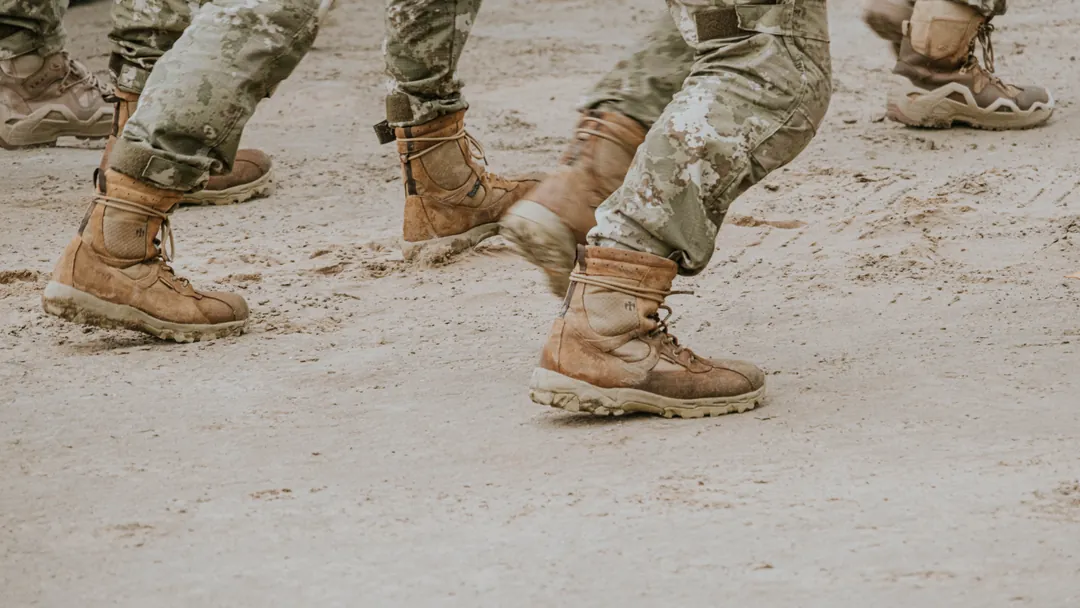How to Lace Military Boots: The Complete Field Guide
November 18, 2025 at 8:57 AMHow to Lace Military Boots
Military boots are one of the most critical pieces of protective gear for anyone operating in the field. Proper traction, ankle stability, thermal balance and all-day comfort only reach their full potential when the boot is laced correctly. No matter how advanced the boot design is, an incorrect lacing technique compromises foot stability and decreases overall performance. This is why learning how to lace military boots is not just a technical step, but a fundamental component of operational safety.
Modern tactical boots feature rubber outsoles engineered for grip, reinforced ankle frames, abrasion-resistant uppers, breathable linings and ergonomic shaft cuts. Some include fast-on systems or hybrid designs for rapid deployment. Yet these features only show their true value when paired with proper lacing tension. Poor lacing causes heel lift, forefoot slippage and a higher risk of ankle rolling. Correct lacing supports balance in rough terrain, reduces fatigue during long marches and enhances stability during quick maneuvers.
Why Proper Boot Lacing Matters

A military boot is the most stressed contact point between the operator and the ground. Each step demands balance, energy transfer and shock absorption across constantly changing surfaces. Proper lacing ensures these biomechanical needs are met by stabilizing the foot, supporting the boot’s natural shape and distributing pressure evenly across the instep. Loose lacing leads to slippage, while overtightening restricts blood flow.
In duty-focused environments, correct lacing becomes even more critical. The load transferred to the feet increases with kit weight such as weapons, packs and protective equipment. Managing this load safely is directly tied to lacing technique. Field operators also depend on laces that stay tight throughout the day, which is why many tactical boots use high-density lace materials.
A well-laced boot allows for more precise ground feedback, which is especially valuable on rocky terrain or during night missions. For this reason, military boot lacing techniques are considered an essential part of field performance.
High-cut tactical models such as the KARPAZ™ V2 gain even higher stability and reduced internal foot movement when laced properly.
How to Lace Military Boots: Step-by-Step
1) Start With Even Lace Lengths
Begin at the bottom eyelets. Both lace ends must be equal in length before moving upward. Maintain balanced tension through each row to avoid hotspots or uneven pressure later. At this stage, keeping the lace slightly loose helps preserve natural toe mobility.
Some military boots have narrower or reinforced lower eyelets; feed the lace cleanly and flat to avoid twisting, which can create pressure points.
2) Control the Instep Tension
The instep area should be laced more firmly. This prevents the foot from sliding forward during descents, sprints or sudden stops. Proper tension here also reduces friction and helps prevent hotspots during long walks. A well-padded tongue further enhances comfort.
3) Use the Speed Hooks for Ankle Stability
Speed hooks (kanca) are the most critical component of tactical boot lacing. Increase tension gradually as you ascend each hook. All hooks must be used for maximum stability; skipping even one reduces ankle support.
Some modern boots feature auto-locking hooks that clamp the lace as it passes, preventing loosening during movement. This makes a noticeable difference in field conditions.
4) Secure Knot and Lace Management
Finish with a reliable knot—double knots provide the best hold. Long lace ends increase snag risk, so tuck them under the tongue or wrap them once around the boot shaft. In operational settings, laces should never remain exposed.
Military Boot Lacing Techniques
1. Diagonal (Cross) Lacing

The most common technique, where laces cross in an “X” pattern through each row. This method distributes pressure evenly across the instep and prevents internal foot movement. Ideal for long marches and uneven terrain. Many tactical boots come factory-laced this way. It balances speed, comfort and stability.
2. Ladder Lacing

The ladder lacing technique is one of the most stable field lacing techniques for boots. Laces run horizontally and connect with vertical segments, creating a ladder-like structure. This method resists loosening and locks the ankle firmly in place. Preferred for climbing, load-bearing missions, rapid maneuvers and rocky terrain. Its rigid structure delivers a clear advantage during high-intensity operations.
3. Military Vertical Lacing

In this method, laces travel vertically between eyelets instead of crossing. This reduces friction, enables faster tightening and allows the lace to cinch smoothly in one pull. It relieves pressure on specific instep points and facilitates quick donning/doffing. Extremely useful for missions requiring fast gear transitions.
How to Install Laces on a Military Boot
Start from the bottom eyelets with equal lace lengths. Gradually increase tension row by row. Ensure the lace lies flat when transitioning to hooks, allowing the locking mechanism to function properly. After finishing, perform a short test walk to check fit and tension.
How to Install a Military Boot Lace Lock
A lace lock keeps tension stable throughout the mission. Thread the lace ends into the lock from the bottom and exit through the top. Position the lock close to the instep—too low reduces effect, too high restricts movement.
How to Install a Tactical Boot Zipper Panel
Place the zipper panel on top of the boot tongue. Feed the laces through the metal rings on the panel to anchor it. After closing the zipper, reassess ankle support. Clean the zipper regularly to prolong its lifespan. Some tactical boots feature an integrated zipper system instead of a removable panel.
Common Lacing Mistakes
- Overtightening the laces
- Skipping speed hooks
- Uneven lace tension
- Leaving lace ends exposed
- Skipping the post-lacing test walk
These small errors can have major consequences in operational environments.
Choosing the Right Military Boot Lace
Lace selection directly affects performance. High-density options such as ANAFARTA Tactical Boot Laces reduce loosening and improve knot stability during long missions.
| Lace Type | Advantages | Disadvantages | Best Use |
| Nylon Weave | Water-resistant, high durability | Stiff at first | Field, operations |
| Polyester | Holds knots well, low stretch | Hardens in mud | Urban use |
| Paracord | Extremely durable, multi-purpose | Slips in metal eyelets | Survival, emergency |
| Thick Oval | Strong ankle hold | Harder to thread | Heavy loads |
| Thin Round | Light, quick lacing | Can loosen easily | Short missions |
| Elastic System | Tightens in one pull | Less stability | Quick-entry missions |
A military boot is the critical link between the operator and the ground. When the right military boot lacing techniques meet durable materials, the boot reaches its true performance potential. Balanced tension, proper knot security and ankle stability allow confident movement in any environment. Whether in urban settings, the field or high-tempo missions, the difference often lies in the lacing technique.
Correct lacing transforms a boot from simple protection into a mission-ready platform built for confidence, control and endurance.

